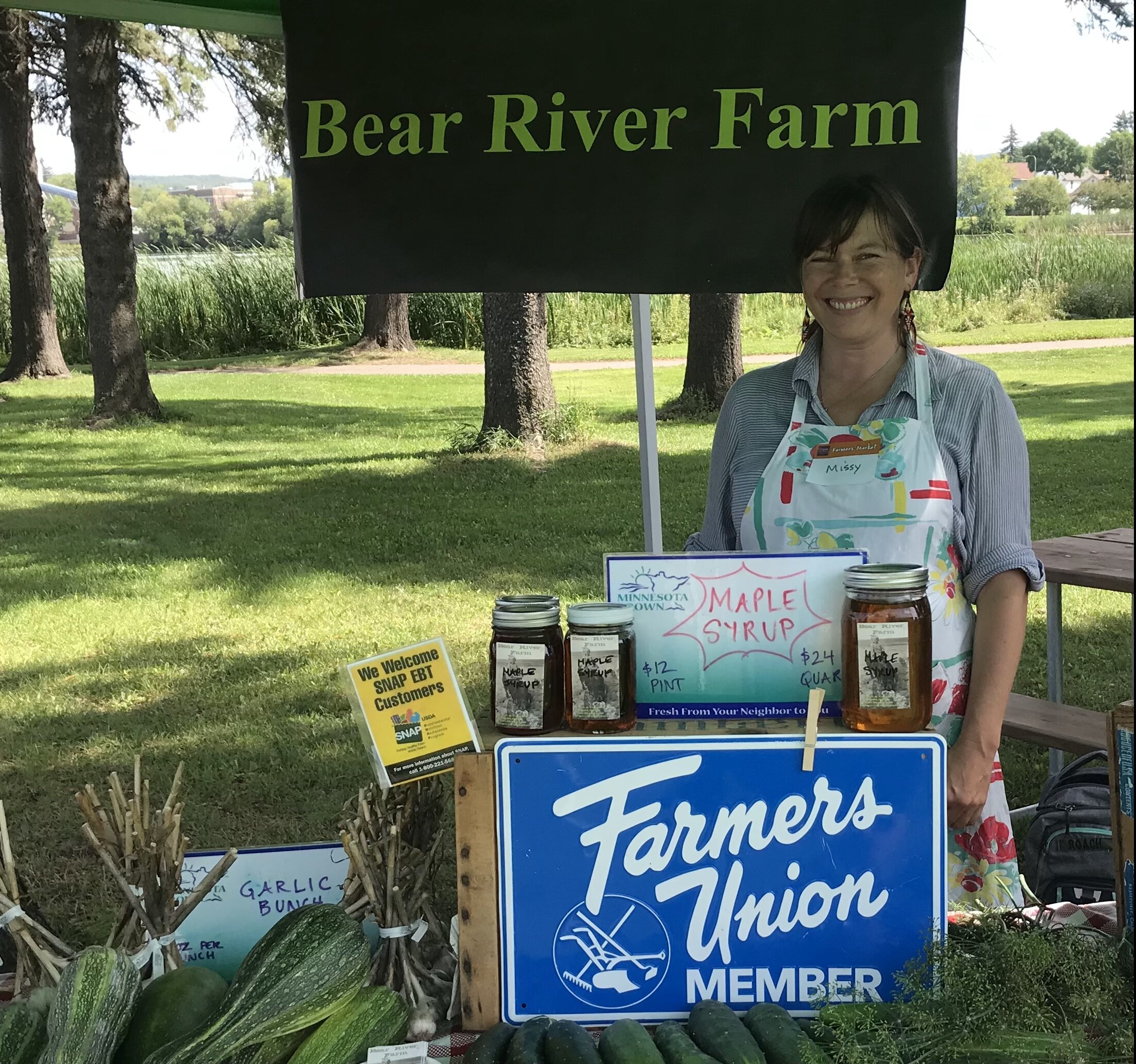The Grass children (left) and a friend (right) at the fair with their winnings!
She had twenty head of Gelbveigh, and he had twenty head of Angus, cattle that is. And then, they met. Lindsay Takala and Jake Grass eventually combined their herds, married, and established what is now Grass Meadows Farm. Five years ago, they relocated here from Pine City to land that Lindsay’s family has farmed since 1903. They bought a neighboring farm and now have about two hundred acres. Room to graze cattle and pasture hogs and raise four children as well as breeding golden retrievers for hunting. It’s a busy place.
The children, Madeline, Kaylee, Jeremiah, and Lydia are home schooled, so they’re present for the daily learning opportunities that a farm provides. This spring, Madeline, the oldest, was able to observe a C-section on one of their sows and to help revive and care for the piglets. All four share the planting and maintenance of a large vegetable garden. They sell produce at the Hibbing Farmers Market where their parents sell grass-fed beef and pastured pork. This fall they’re harvesting tomatoes, zucchini, yellow squash, candy roaster and silver bell winter squash, and lemon cucumbers. Madeline learning to preserve—canning, pickling, freezing, and dehydrating the bounty.
In addition to raising meat animals, retrievers, and produce, the Grass family hunts. The children help to make the deer jerky that lasts all winter. The children also raise pigs to show at the county and state fairs. Jeremiah won the grand champion prize in the novice division judging contest and Kaylee took fourth place this year. In a trailer converted to a coop, Kaylee has twenty laying hens and twenty-six pullets--a budding egg business. And there’s always work to do on Grandpa Takala’s dairy farm across the road.
Their cattle herd, mostly Angus, is bred right here. “From conception to consumption” is Jake’s motto. It numbers about one hundred now, and he also sells grass-fed feeder cattle. The cattle are given no grain, no hormones, and no antibiotics. They graze acres of native forage in the spring, summer, and fall. Jake seeded years ago, but mostly relies on what grows naturally, occasionally introducing additional legumes such as Red Clover and Birds Food Trefoil. In the winter, they “bale graze” with bales strategically placed to fertilize each section of the many acres of grazing land for the next year’s forage. The Grasses don’t use any other fertilizer.
They also don’t make any hay—they purchase it all from trusted sources who raise it to a high standard for grass-fed beef. Jake tells me that he used to try to do it all but discovered that relying on others for what they do best builds community. They buy feeder pigs for meat production and use a high protein custom feed mix that they buy from Floodwood Farm and Feed, a local farm business I’ve profiled here in the past. The pigs are given no hormones or antibiotics. Jake and Lindsay keep about forty pigs in a “loose housing system” which gives them room to roam and do what pigs love to do: wallow and root.
Grass Meadows Farm, like all area farmers, uses local meat processing facilities to get meat ready for sale at farmers markets and direct sales to customers. At farmers markets, you can buy individual packages of bacon, brats, pork chops, ground beef, etc. In bulk, folks generally purchase a half hog (around 75 pounds) or a quarter of beef (about 85 pounds). Area folks who buy meat locally usually do so because they want to keep their food dollars local. They might also want grass-fed meat, specifically. They may want to buy only pastured animals (no pens or cages, out in the open with room to run and forage). The farmers who sell meat in our area are all willing to have customers come to the farm and see how the animals are housed, what they’re fed, and how they’re treated. This is increasingly true for egg purchases as well. Small local egg producers advertise “organic feed only” or “free range.” Customers also like meeting the neighbor who raised their food, and that builds community too.
Northeast Minnesota is one of the few areas in the country where the number of farms is increasing. The United States Department of Agriculture conducts the Census of Agriculture every five years. This year is a census year, so the latest statistics are from 2017. Those numbers show an increase in farms in Carlton, St. Louis, Lake and Cook counties in northeast Minnesota. That’s counter to the national trend of decreasing numbers of farms. As you know from reading this column, the farms up here are generally smaller, focused on specialty crops or unique livestock, and are tended by farmers who also hold off-farm jobs.
Many sell at the area farmers markets, through the new farmers market online hubs, or directly to customers through their own websites. Some also use Farm Direct Minnesota (farmdirectminnesota.com), Anything Grown (anythinggrown.com), or Iron Range Grown (https://www.facebook.com/groups/IronRangeGrown) all of which have Facebook pages publicizing what’s available. Some use Farmish, the new phone app that maps out local producers in a zip code area. And there’s always Minnesota Grown, the MN Department of Agriculture’s directory of producers across the state (https://minnesotagrown.com/search-directory/). If you’re looking for local food, give these tools a try!






































































